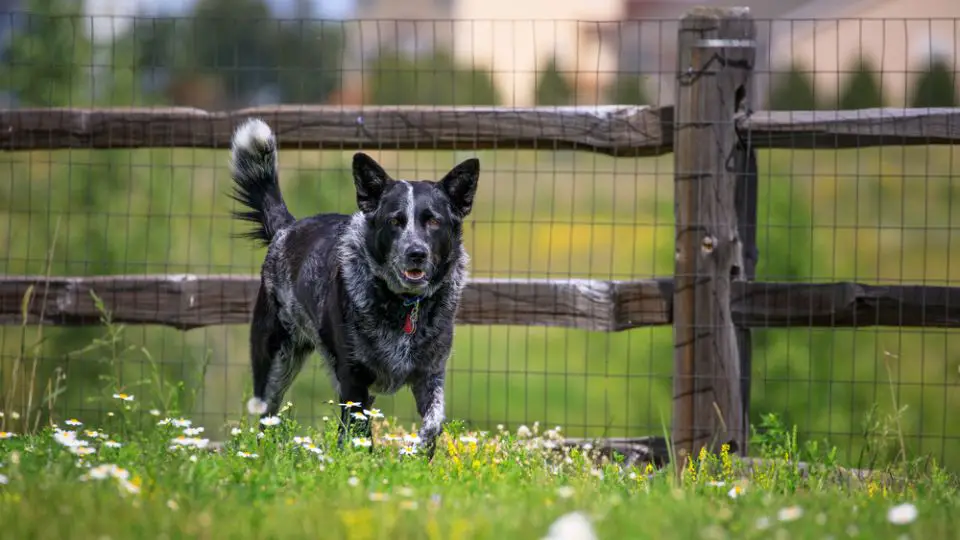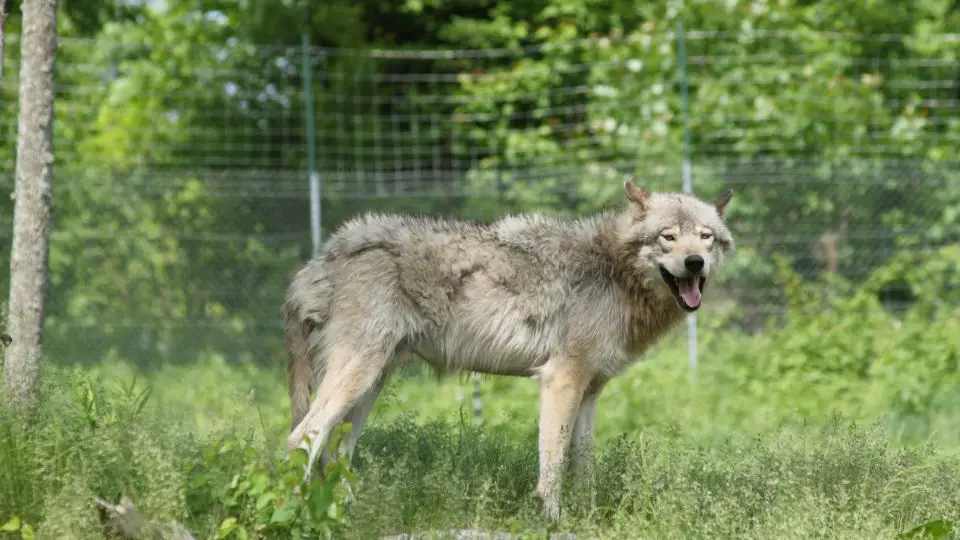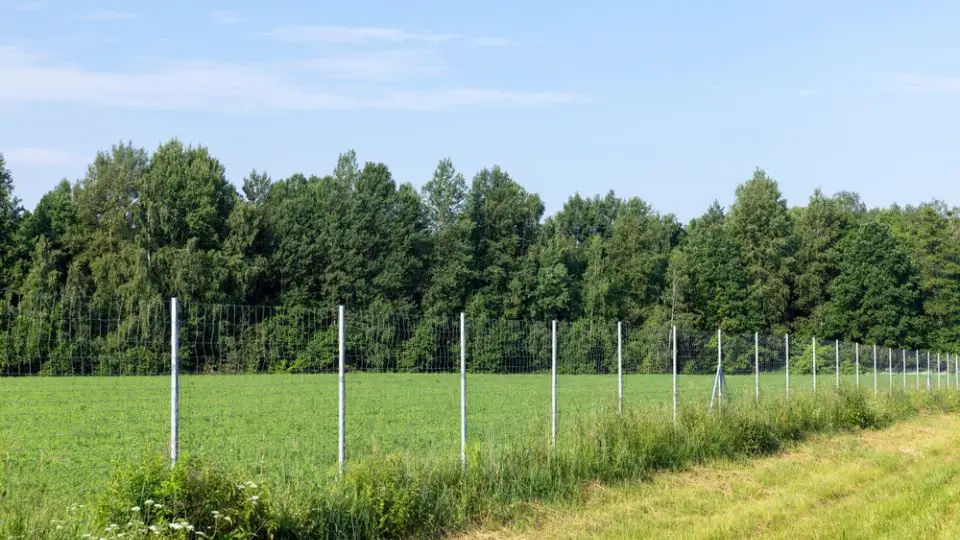The best way to stop varmints from digging underneath your fences is by establishing an underground barrier. Chicken wire or hex netting is the best fencing material to keep pests out. Propping up a horizontal L-footer one foot underground can also be especially effective in keeping pests at bay.
Skunks, opossums, raccoons, and gophers can all be troublesome pests—especially if they decide to live under your house. While it’s not possible to keep every animal out 100 percent of the time, there are certain measures you can take.
You can utilize several strategies below to discourage animals away and from destroying the structural integrity of your home and yard. Here are the most effective ways to prevent outside animals from entering your property.
Table of Contents
How Do I Keep Animals From Coming Under My Fence?
Installing a galvanized, steel chicken wire mesh can halt animals from burrowing underneath your fence. This animal barrier fence is too thick for animals to chew through, and the mesh is small enough that they can’t squeeze in.
Usually, the main reason these animals come under your fence is due to the presence of food or shelter. If you can eliminate their access to these sources, they’ll be less likely to invade your home.
Does Dig Defence Work for Raccoons?
Yes, a Dig Defence fence works for raccoons. This 4-foot wide, 15-inch steel-prong fence prevents raccoons from accessing your property because of its sturdy, inch-spike spacing design.
A Dig Defence alternative is chicken mesh. It’s just as effective at spike spacing as the Dig Defence fencing, but considerably cheaper.
What Can I Place at the Bottom of My Fence to Keep My Dog From Getting Out?
If your dog is a notorious digger, you may want to consider installing an underground fence. The materials for this type of fence can play a big part in its durability.
Usually, hardware cloth, chain-link, and chicken mesh are good choices for an underground fence. You may also pour concrete along the base of your fence to make it more difficult for your pup to escape.

What Is an L Footer?
An L Footer is a barrier bent perpendicularly to create a form that resembles the letter L. This design effectively keeps pests from burrowing underneath fences and into your property.
L Footers are often made of steel or chicken wire and can be placed both above and underground. When installed correctly, they can be an effective pest deterrent.
How Do I Dog Proof My Backyard?
Dog proofing your backyard can be challenging if you own a wide open space, but there are some ways to make it more difficult for wild canines to enter.
Here are some home improvement tips to dog-proof your backyard:
- Install a sturdy garden fence with an L-shaped footer
- Remove sources of food and shelter
- Use chicken wire or hardware cloth to fill in gaps
- Regularly check your fence for weak spots
- Pour concrete along the base of your fence
- Secure trash bags tightly
- Clean your patio or deck regularly
What Can You Put Along the Bottom of a Fence?
You can pour some medium-sized or large rocks along the bottom of your fence to make it more sturdy. These rocks help stabilize the fence and also prevent soil from damaging the integrity of the fence.
You can also install an L-footer or chicken wire to create an underground barrier. Sheet metal may also work to prevent outside pests from entering or exiting your yard.
How Do You Block a Gap in a Fence?
If the gap is close to the ground, you can block it by adding concrete, bricks, or rocks along the base. If the gap is higher up, try the following:
- Measure the opening
- Cut a piece of wood or chicken wire
- Screw or glue it in place
You can also try cut a wooden or metal fence panel to size and attach it to the posts with screws or bolts.
How Can I Build a Cheap Dog Fence?
A chicken wire fence is a simple, unobtrusive, and inexpensive dig protection barrier. The good news is you can enhance the protection of your fence underground by making a DIY dog fence.
Here’s how to do it:
- First, acquire a roll of chicken wire. The amount you need will depend on your garden size.
- Next, acquire some fence posts. You can use metal posts, wood posts, or even old tires filled with concrete.
- Prop these fences up around the perimeter of your garden.
- Once your posts are ready, attach the chicken wire to them. Make certain the wire is taut to prevent your dog from allowing it to slacken.
- Finally, add a layer of rocks or bricks along the bottom of the fence to prevent your dog, groundhogs, and other small animals from digging under it.

How Do I Keep the Neighbor’s Dog Out of My Fence?
Starting your morning cleaning up after your neighbor’s dog can be frustrating. If you want to keep the neighbor’s dog out of your yard, consider doing these things:
- Install a garden bed water sprayer
- Plant citrus around your garden perimeter
- Place mothballs around
- Use an ultrasonic dog repellent
- Improve your fence systems
You can also have a friendly chat with your neighbor to stop their dog from intruding on your property. They may have the decency to comply.
What Is a Kickboard on a Fence?
A kickboard is a horizontal board at the bottom of a fence. This strengthens the fence and prevents it from coming in contact with the ground. It’s often preferred by homeowners who want to keep their fences from rotting due to contact with soil and debris.
How Do You Keep Wild Animals off Your Property?
Luckily, there are a several strategies to keep wild animals off your property. Some of the common ones include:
- Install a pest-proof fence with chicken wire and L-footing fences
- Keep food and shelter sources away from the perimeter of your property
- Use mothballs, ultrasonic dog repellents, or citrus plants
- Contact the local wildlife control agency for assistance
What Kind of Fence Keeps Raccoons Out?
Raccoons are dexterous animals, capable of digging and climbing a slew of inadequate fences. Some types of fencing that keep these bandit pests at bay are:
- Overhang fences
- Electric fences
- Concrete fences
- Wire mesh fences

How Do I Dig Proof My Yard?
Here are a number of suggestions to make your yard less appealing to digging animals. Some of these include:
- Remove any debris or food sources from your yard
- Use pest traps to relocate or eliminate animals
- Plant prickly shrubs or plants along your property line
- Fill in any holes that have already been dug
- Install dig-proof physical barriers like this L-footing fence design
- Use mothballs, ultrasonic dog
Do Rabbit Holes Have Two Entrances?
Rabbits dig burrows, called warrens, as their primary den. They live in families and can have multiple entrances and exits to their warren. They are used as escape routes in case of predators.
How Do I Stop Critters From Digging Under My Fence?
You’ve done the best you can to keep your fence critter-proof, but somehow they’re still popping up out of nowhere. If you’re finding new holes appearing under your fence, try these pest deterrent methods to put an end to the digging for good:
- Install no-dig, L-footing fencing along the base of your fence.
- Add a layer of rocks or bricks to reinforce the fence.
- Use quick-drying cement to fill in any holes that have already been dug.
- Use chicken wire along the base of your fence.
- Get rid of food sources that might be attracting animals to your yard.
- Use mothballs or ultrasonic devices to drive animals away.
If you need more help, contact a pest control professional to assess the situation and find a permanent solution.

